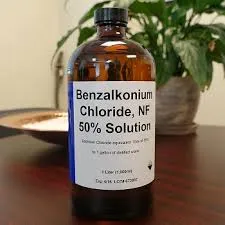pbtc chemical pbtc
Understanding PBTC A Versatile Chemical Compound
In the realm of chemical substances, PBTC, which stands for phosphonobutane tricarboxylic acid, stands out due to its diverse applications and significance in various industries. This compound has garnered attention for its unique properties and functionalities, particularly in water treatment, scaling inhibition, and as a chelating agent.
Chemical Structure and Properties
PBTC is a phosphonic acid derivative characterized by its multi-functional structure. With three carboxylic acid groups and a phosphonic acid group, PBTC exhibits strong hydrophilicity, allowing it to interact effectively with water molecules. This unique ability positions PBTC as an excellent agent for controlling scale in water systems, making it particularly valuable in industries where mineral build-up can disrupt operations.
Applications of PBTC
One of the primary applications of PBTC is in the field of water treatment. It is widely used as a scale inhibitor in cooling water systems, boilers, and other industrial water systems. The formation of scale is a common issue in water systems, leading to decreased efficiency and potential damage to equipment. PBTC helps prevent the crystallization of calcium carbonate and other minerals, thereby maintaining optimal flow conditions and extending the lifespan of machinery.
Furthermore, PBTC acts as a corrosion inhibitor. Metal surfaces in contact with water are prone to oxidation and deterioration over time. By forming a protective layer on metal surfaces, PBTC reduces corrosion rates and enhances the durability of equipment. This property is particularly useful in industries such as power generation, petrochemical, and manufacturing, where the integrity of machinery is paramount.
In addition to water treatment, PBTC also finds applications in the agriculture sector. As a chelating agent, it effectively binds metal ions, improving nutrient availability for plants. This leads to enhanced growth and yield, making PBTC a valuable component in fertilization programs. Its ability to stabilize micronutrients further aids in the overall health and productivity of crops.
pbtc chemical pbtc

Environmental Considerations
The environmental impact of chemical substances is a growing concern, and PBTC is no exception. Unlike some traditional phosphonate compounds that can contribute to environmental issues, PBTC is considered to have a lower ecological footprint. Its high efficiency in small concentrations means that less chemical is needed compared to other inhibitors, minimizing potential harm to aquatic ecosystems.
Moreover, the biodegradability of PBTC is a significant advantage. It breaks down into non-toxic components over time, reducing the risk of accumulation in water bodies. This characteristic aligns with the increasing demand for sustainable chemicals in industries focused on minimizing their environmental impact.
Future Directions
As industries continue to evolve and adopt more sustainable practices, the use of PBTC is likely to expand. Researchers are exploring its potential in new applications, including its role in advanced materials, nanotechnology, and even in biomedicine. The versatility of PBTC, coupled with its environmentally friendly profile, positions it as a compound of interest for future innovations.
Additionally, ongoing studies are focused on enhancing the efficacy of PBTC in various formulations, combining it with other agents to create more robust solutions for tackling scaling and corrosion. These advancements may lead to more efficient and sustainable practices across multiple sectors, reinforcing the importance of PBTC in modern chemistry.
Conclusion
PBTC is a remarkable chemical compound that plays a crucial role in numerous industries, particularly in water treatment and agriculture. Its unique structure and properties contribute to its effectiveness as a scale inhibitor and corrosion protector, while its lower environmental impact presents it as a sustainable option in an increasingly eco-conscious world. As research progresses, the potential applications and benefits of PBTC are likely to expand, making it a significant player in the landscape of industrial chemicals. Whether it’s improving the efficiency of water systems or enhancing agricultural productivity, PBTC demonstrates the valuable intersection of chemistry and practical application.
-
2 Phosphonobutane 1,2,4 Tricarboxylic Acid (PBTCA): Superior Scale & Corrosion InhibitorNewsAug.31,2025
-
Dodecyldimethylbenzylammonium Chloride: High-Purity DisinfectantNewsAug.30,2025
-
2-Phosphonobutane-1,2,4-Tricarboxylic Acid: Scale & CorrosionNewsAug.29,2025
-
Premium Isothiazolinones | Broad-Spectrum Biocidal SolutionsNewsAug.28,2025
-
LK-319 Special Scale And Corrosion Inhibitor For Steel Plants: Advanced Solutions for Industrial Water SystemsNewsAug.22,2025
-
Flocculant Water Treatment: Essential Chemical Solutions for Purification ProcessesNewsAug.22,2025





